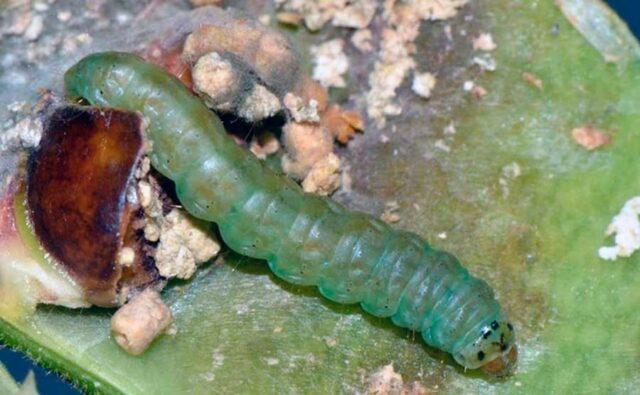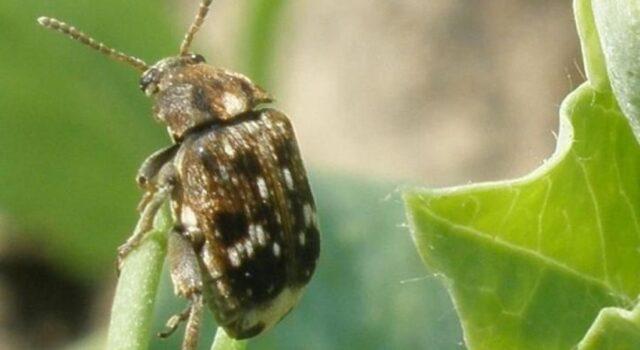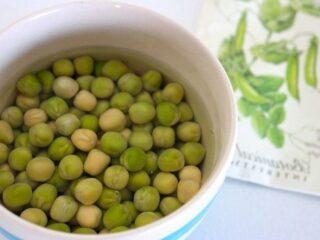Content
Planting peas in open ground in spring allows you to get a juicy harvest in mid-summer. When sowing a crop, it is important to follow the basic rules and pay attention to the composition of the soil.
When to plant peas in open ground
The culture is cold-resistant and germinates at temperatures just above zero. You can sow peas in open ground immediately after the snow melts. In the middle zone, planting is usually carried out in early April, in Siberia - in early May.
When choosing the timing, it is important to take into account specific weather conditions. If severe frosts are still expected after the thaw, then it is better to wait until planting in open ground.

In the southern regions, you can sow peas in the garden from mid-March
Is it possible to plant peas in the fall before winter?
Theoretically, you can sow peas before winter, and not just in spring. In this case, it will undergo hardening in natural conditions, and with the onset of heat it will rise at the earliest possible time.
At the same time, only special winter varieties designed for exposure to negative temperatures are suitable for autumn planting in open ground. Most varieties are sown at traditional times.
How to plant peas in open ground in spring
Planting peas in open ground is not particularly difficult. In the process, it is important to choose the right area for the crop and pre-treat the grains.
Seed preparation
To properly plant peas, it is necessary to prepare the seeds. First of all, you need to select the highest quality material. To do this, the seeds should be poured into salted water - high-quality grains will sink to the bottom, and defective ones will remain floating on top.
It is also recommended to germinate grains before planting in open ground. To do this, they are wrapped in damp cloth and put in a warm place for 3-6 days.
Where to plant peas
Most pea varieties in open ground prefer well-lit fertile areas. The place may be moist, but close proximity of groundwater should not be allowed. When planted in such a place, the roots will begin to rot.
You can successfully grow peas in the country in areas where pumpkin and nightshade crops were previously located. Tomatoes and mustard, as well as cucumbers, turnips and carrots, are good neighbors.
Soil and bed preparation
It is necessary to prepare the place for spring planting in the fall. The procedure looks like this:
- The soil in the selected area is dug up.
- Apply per 1 m2 soil 25 g of potassium chloride, 35 g of superphosphate and 5 kg of compost.
- Add 100 g of wood ash if the soil is highly acidified.
After this, the area needs to be dug up again and watered properly. With the onset of spring, the open soil in the prepared area is loosened and raised beds of the required length are formed.
Pea planting scheme
Sowing peas in open ground in the spring is carried out immediately after warm weather has established. The algorithm is as follows:
- Wide furrows up to 8 cm deep are made in the prepared beds.
- A little ash and compost are poured into the trenches, and then a layer of soil is added, leaving about 3 cm for the seeds themselves.
- Soaked and sprouted pea grains are placed in furrows in open ground at a distance of 10 cm from each other and covered with soil.
- The earth is crushed and compacted, and then the beds are watered abundantly.
After planting, the area should be covered with plastic wrap for ten days. After the emergence of shoots, it is removed.

Between the beds with peas you need to leave at least 50 cm of free space
How to care for peas in open ground
The agricultural technology for growing peas in open ground is simple, but requires attention from the gardener. The culture must be regularly moistened. In addition, supports should be installed for the plant; pea stems are lodging; without a fence nearby or a special trellis, they will simply fall to the ground.
Watering
The peculiarity of growing peas is that for good development in open ground after planting, they need frequent and abundant watering. In hot and dry weather, the plant is moistened twice a week. During the flowering period, it is recommended to apply 10 liters of water per square meter of soil once every three days.
Peas calmly tolerate short-term lack of moisture in open ground.But if the drought lasts too long, the fruiting of the crop will noticeably decrease.
Top dressing
Peas show maximum yield with timely application of fertilizers. For the first time after planting, the plant in open ground is fed during the period of green mass growth. The soil is spilled with mullein solution or nettle infusion, 3 liters per 1 m2.
The second time, fertilizers are applied after flowering - 15 g of nitroammophoska is diluted in 10 liters of water. With the onset of autumn, when digging up the beds in the autumn, you can add phosphorus-potassium minerals to the soil.
Garter
Growing peas in open ground most often requires the construction of supports. The culture has lodging stems. If you leave them to creep along the ground, the bush will not be able to receive enough light.
For gartering crops, trellises, special or homemade nets, and greenhouse arcs are used. You can plant peas in close proximity to the fence and secure their stems to picket fences. The garter is carried out after the shoots reach 10-15 cm in length and can no longer maintain a vertical position.
Topping
Pea stems, depending on the variety, when planted in open ground, can stretch up to 1-3 m in length. But to increase the yield, the shoots can be pinched at the tops after reaching 20-25 cm. In this case, the peas will produce numerous lateral branches and ultimately produce more pods.

Pinching peas allows you to control their height and avoid the need to build large supports.
Loosening
Planting and caring for peas in open ground requires monitoring the condition of the soil. A week after the sprouts appear, it is recommended to hill the crop.During cultivation, after each watering, the soil near the pea roots is loosened shallowly.
At the same time, it is necessary to remove the weeds that inevitably appear in the beds with legumes after planting in open ground. Neighborhood with self-sowing grasses harms peas because they do not receive enough moisture and nutrients.
Pest and disease control
Peas are moderately disease resistant and can suffer from some fungi. Most often, when planting in open ground, it is affected by:
- fusarium - first the lower leaves turn yellow and the stem darkens, and then the plant dries out entirely;
With fusarium, the roots of peas die, so the disease is difficult to treat
- rust - red-brown pustules appear on the leaves of the crop, which by the end of summer almost turn black, the growth of the bush stops, and the plates gradually crumble;
Rust on peas most often appears at the beginning of flowering in open ground.
- ascochyta blight - a fungal disease manifests itself in the appearance of dry dark spots with brown dots, peas begin to wither and shed their leaves;
Young pea bushes in open ground with ascochyta quickly die entirely
- powdery mildew - you can recognize the fungus by a whitish-gray dry coating on the leaves and stems; over time, the spots turn brown, and the bush stops developing and begins to dry out.
Powdery mildew can also affect pea pods
At the first signs of disease, pea plantings in open ground are treated with copper preparations, colloidal sulfur and Bordeaux mixture. Severely damaged bushes are completely removed from the beds - it is no longer possible to save them; healthy specimens must be protected from infection.
In addition to fungi, some pests pose a danger to peas when planted in open ground. Cultures are especially often affected by:
- bean moth - green, reddish or black caterpillars of the pest gnaw through pods and eat peas;
The bean moth can halve the yield of peas and also makes its seeds unsuitable for sowing.
- pea codling moth - small brown caterpillars leave tunnels in the pods and feed on developing beans; the pest can also be recognized by the black cobweb on the seeds of the crop;
The codling moth on peas in open ground appears most often in dry weather
- weevil - a black beetle with a cross-shaped pattern on its abdomen overwinters in plant debris, and with the onset of summer begins to feed on ripening peas;
Caryopsis leaves small brown spots on pea pods
- umbrella psyllid - small golden bugs feed on pea leaves and can seriously deform the bushes, which will negatively affect fruiting.
Umbrella psyllid often appears on pea bushes next to carrots
Pest control in open ground is carried out using the drugs Zepelin, Accord, Sirocco. Phosfamide and chlorophos also have a good effect. Spraying is necessary 3-4 times per season. The last treatment is carried out no later than 20 days before harvest.
Growing pea seedlings
The most common practice is to grow peas in open ground.But if desired, the seeds can be used for seedlings in order to transfer already formed seedlings to the garden with the onset of warm weather.
The algorithm for growing peas at home looks like this:
- According to the traditional scheme, crop seeds are sorted, calibrated, and then germinated on a damp cloth for 3-7 days in the refrigerator.
- A shallow box is filled with garden soil with the addition of humus, peat and sand, the soil mixture is moistened and holes are made 2 cm deep with a free space of about 3 cm between them.
- One pea is placed in each hole, with its sprout facing down.
- Sprinkle the recesses with the remaining soil and cover the box with film.
For two weeks, the pea plantings are regularly ventilated and moistened with a sprayer. After the first shoots appear, the cover is removed and the seedlings are fed with a superphosphate solution. When the sprouts acquire two true leaves, they can be planted in a common box or planted in separate containers.

Seedlings can be placed in open ground three weeks after the sprouts appear.
Growing peas in a greenhouse
You can grow peas not only in open ground, but also in greenhouse conditions - this method is often used to get the earliest possible spring harvest. Also, the crop in a closed greenhouse can be sown at the end of summer, in which case fruiting will occur shortly before the cold weather.
The algorithm for planting peas in a greenhouse generally does not differ from the usual scheme:
- The soil in the greenhouse is dug up in advance and fertilized with phosphorus-potassium minerals.
- Small furrows are made in the soil with a distance of 25 cm between rows; you need to plant peas to a depth of only 3 cm.
- Water the soil and wait until it settles, and then plant the seeds in increments of at least 5 cm.
- Sprinkle the planting material with soil and after the sprouts appear, carry out the usual care of the crop.
You can sow both soaked and dry pea seeds into the soil in a greenhouse. In the first case, the culture will germinate very quickly. In the second, seedlings will appear later, but the bushes will be stronger and more productive. If there is more than 25 cm between the rows of peas in the greenhouse, you can plant radishes or lettuce in the gaps.

You can plant peas in a greenhouse at a temperature not lower than 12 °C
Conclusion
Planting peas in open ground in spring follows simple rules in April or May, depending on the region. The crop has good hardiness, but requires frequent watering, installation of supports and regular loosening of the soil.
















